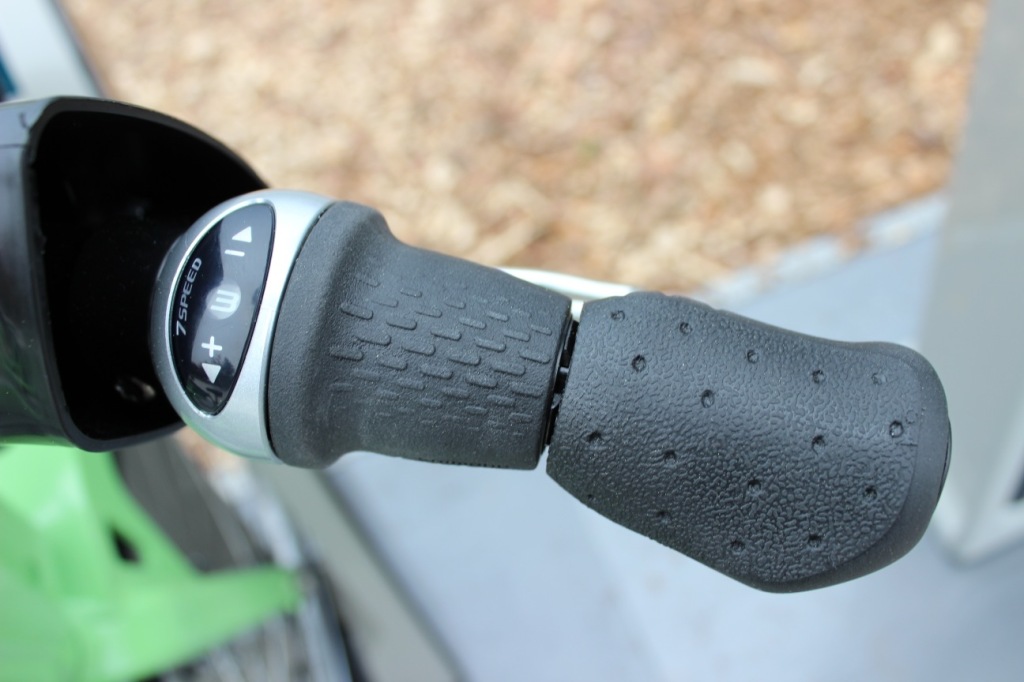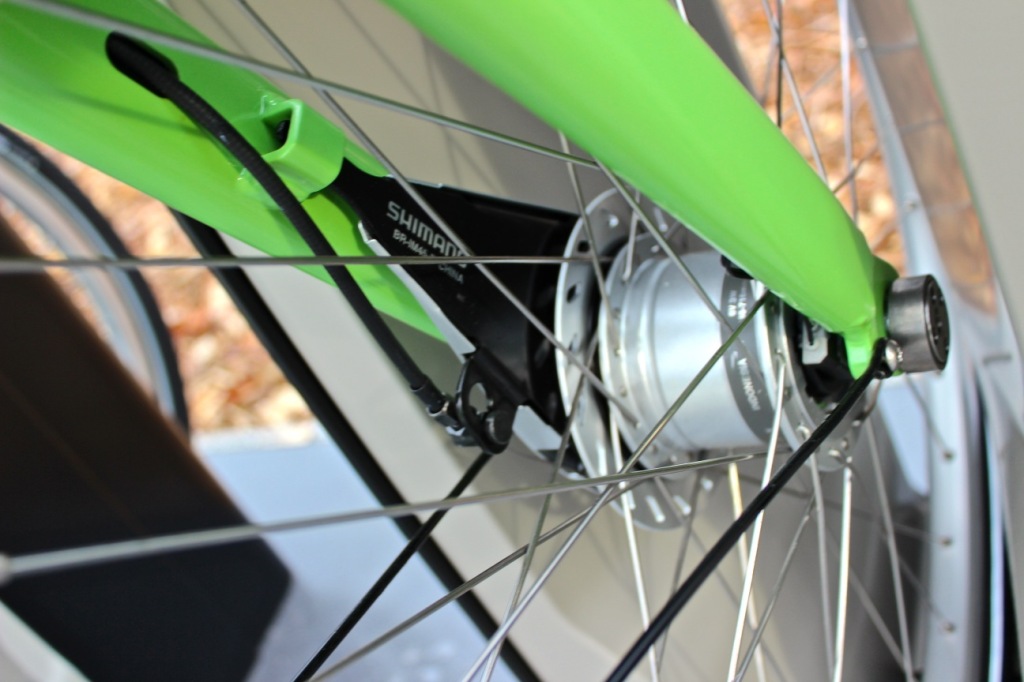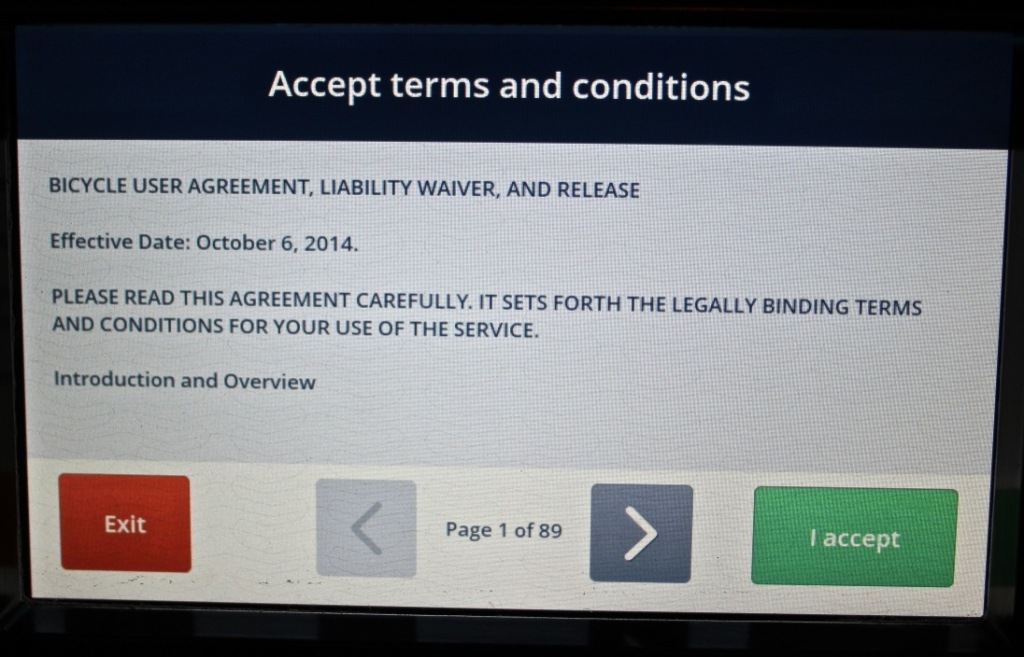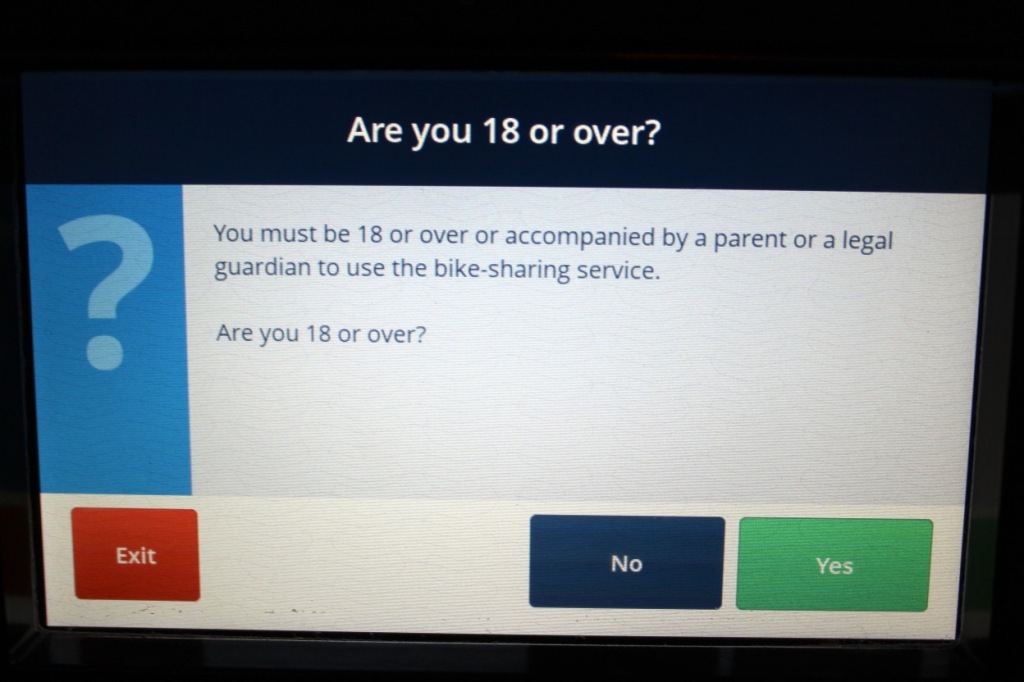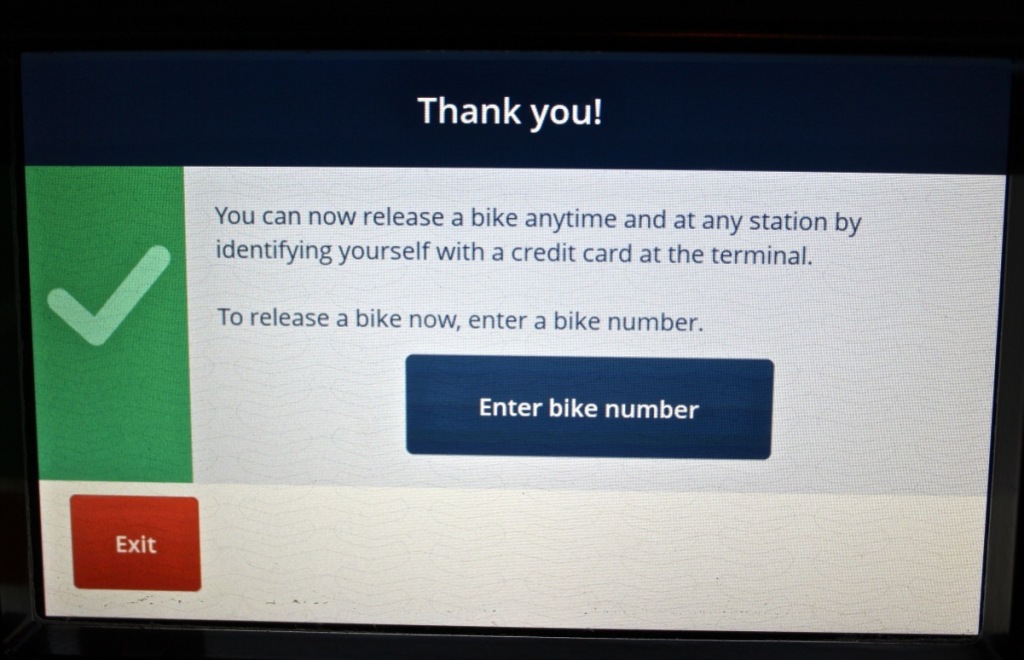
Seattle, historically, has been a place of innovation. From native veterans like Microsoft and Amazon, to fast-growing public companies like Zulily and Tableau, and all the way to the nascent-yet-successful startups, there’s no question that this is a melting pot of cutting-edge ideas.

But the city has been a tad slow to adopt one popular form of transportation — a bike sharing system — until now.
Monday marked the debut of Pronto! Emerald City Cycle Share, Seattle’s first-ever bike-sharing program. The public-private partnership is essentially a Car2go for bicycles and allows people to rent seven-gear bikes, pedal around, and then drop off the two-wheelers at any of the 50 docking stations in town.
Technology plays a key role with Pronto, whether it’s the RFID tags that hold information about each bicycle or the smartphone app that keeps a tally on docking station availability in real-time.
All in all, my inaugural bike-sharing ride was safe, convenient, and a nice workout. But while cool technology made the experience nearly seamless, it also ironically caused a serious speed bump in the process.
Read on to find out what you can expect from the new program.
4:15 p.m.
My roommate Ryan and I make our first-ever bike-share game-plan. At our home in the Green Lake neighborhood, we take a look at the Pronto live map. There aren’t any docking stations within close walking distance of us, so we decide to drive to the eastern-most station next to Seattle Children’s Hospital. From there, we’ll bike down to the University of Washington recreation center, swap bicycles at another docking station there, and ride back to Laurelhurst.
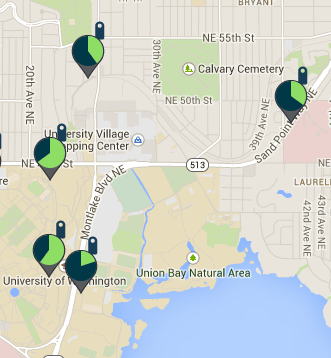
Pronto sells three types of passes: $8 for 24 hours; $16 for three days; or an $85 annual membership. Users can rent the bikes and then drop them off at any other station. You can take as many rides under 30 minutes for the duration of your pass, but any ride lasting longer that will incur additional fees — we kept this in mind as we planned our routes.
4:34 p.m.
We park our car and walk to the docking station, which is decked out with 10 flashy blue-and-green bicycles. Here’s are some close-up photos of the bike itself:
- Pronto may be gone but Seattle bike sharing isn’t dead. (GeekWire Photo)
We’re excited to test this out. Ryan approaches the payment station and starts using the touchscreen. It appears to be smooth sailing until he inserts his credit card to pay … and the machine decides it’s a little hungry for plastic payment tools.

Uh oh.
The credit card is stuck, as Ryan inserted it the wrong way. But the on-screen software doesn’t appear to be malfunctioning, so we push every possible button, restart the purchase process, and even tried our best to yank the card out of the reader. It is absolutely not coming out, and we didn’t bring our toolbox.
There’s a support number on the machine, and I immediately reach someone on the other line. She asks for the last four digits on the card to see if it had been charged. It hasn’t.
After a few minutes on hold, she tells us that a technician is coming to help. A little bummed with our experience so far, Ryan tweeted out his frustration and tagged Pronto. It was nice to get a quick response both on the phone and on Twitter:
@rsingh90 Oh no! :( give our customer service team a buzz: 844-677-6686
— Pronto Cycle Share (@CyclePronto) October 14, 2014
5:29 p.m.
We get a call from Chris, the operations manager at Pronto. He apologizes and tells us that no one has actually been sent to our docking station, but that a Pronto employee is now on his way from the company’s headquarters in SoDo.
He mentions something about it being Pronto’s first day in Seattle. I understand, but it’s nearly been an hour. Had I really needed to be somewhere, or if another customer wanted to use the credit card reader, this would have been a much more pressing problem.
In the meantime, we check out the maps and other related information that Pronto has available. There’s apparently an app that tells you the status of all the other docking stations, so we download that from SpotCycle. We also notice at least six people walk up to the docking station, interested in what all the heck was just installed in their neighborhood.
6:00 p.m.

Still no sign of Mr. Pronto. While this is somewhat expected — it’s rush hour, and our docking station is the farthest from Pronto’s HQ — we’re getting antsy.
As we wait on the sidewalk, I notice two taxis, several busses, and countless cars drive by — the traditional transportation options we’ve come to know. But I also see a couple Car2go vehicles zipping down 25th Ave. There were probably a few Uber and Lyft drivers in the area, too. And, of course, I was about to test out the newest mode of transportation that Seattle had to offer.
With big Light Rail expansion construction plans to be completed within the next decade, this city’s transportation landscape has the potential to change quite a bit in the next several years.
6:10 p.m.
Finally, Mr. Pronto is here. He’s perplexed by the problem — “I tested every machine,” he notes — and proceeds to open up the machine. After five minutes, the card still isn’t coming out.
Thankfully, the man brought pliers, and after a couple yanks, the card was free.
We try again to purchase a 24-hour pass. Here’s how the on-screen process works (click the right arrow):
As you can see in the slideshow, each bicycle has its own ID number. Once you enter that four-digit code, the docking station unlocks the bike for 30 seconds and you simply take it out. Pronto also sells a $2 key fob that lets you unlock bicycles by inserting the fobs into a dock, removing the need to spend time at the touchscreen.
Once we had our bikes, we needed helmets — a topic of slight controversy as far as bike-sharing goes in Seattle because of King County’s helmet law. Most cities where bike-sharing is available do not enforce a helmet law, and some argue that Seattle should remove its helmet regulation in order for bike-sharing to be successful.
Anyways, much to our surprise, the helmet bin is completely unlocked.

We both take a helmet, which are wrapped in plastic. Pronto asks people to drop them in a bin after they’re done riding, and cleans the helmets after each use. It plans on charging users up to $2 to rent a helmet for each ride in the future — which could get expensive for the user — but for now, it’s relying on the honor code. This could pose numerous problems, obviously.
The helmets themselves are nice and fit comfortably. They look pretty sweet, too:

6:20 p.m.
Finally, we ride.
Immediately, while waiting for the crosswalk light, a fellow biker starts asking us about our own bicycles. He said he signed up to be an annual member and says we’re the first he’s seen actually riding the Pronto bikes. During our entire ride, we are asked numerous times about the bicycles— these are definitely attracting attention and interest in Seattle as far as we could tell.
Our plan was to head down the Burke-Gilman Trail toward the UW. As far as the bike itself, the gear-changing was relatively smooth. The headlight could be brighter, but it works. And the pedals were pretty slick — not good if it rains and you don’t have the right shoes on. Other than that, the bicycles ride pretty nice.
We coast down the Burke Gilman and end up actually passing another Pronto docking station on our way to the UW.
6:45 p.m.


We make it to the UW Intramural Activities Center with no problem — until we lock our bikes and try to unlock another just seconds later.

For some reason, we both get the notification above after swiping our credit card again to verify our identity (this process is likely smoother with the key fob).
But on our next try, the process works — seems like there is some sort of delay in the software. Regardless, we hop on our new bicycles and ride back.
Final thoughts
Like I noted in the beginning of this post, my first Pronto experience was a lot of fun — aside from the credit card reader hiccup. Again, had I needed to be somewhere, this would have been much more frustrating for us given that it took Pronto 90 minutes to retrieve the card.
 Aside from technical complications, the unlocked helmet bin combined with the King County helmet law — it’s an $81 fine if you’re ticketed — could pose some serious roadblocks to the success of Pronto in Seattle, especially since the system is designed for quick trips around town and can be a great solution for the “last mile” problem.
Aside from technical complications, the unlocked helmet bin combined with the King County helmet law — it’s an $81 fine if you’re ticketed — could pose some serious roadblocks to the success of Pronto in Seattle, especially since the system is designed for quick trips around town and can be a great solution for the “last mile” problem.
But Mayor Ed Murray — who wants to use $600,000 of the city’s budget on Pronto expansion plans — appears committed to keeping the helmet law around, and he has obvious safety reasons to do so. Still, it should be noted that there have been no reported deaths with U.S. bike share programs thus far. As far as head injuries rising in cities with bike share programs, well, that’s up for debate.
The system could also be improved — and appeal to more riders — if there was an option cheaper than $8 for those that just want to go for a quick ride, like we did.
If Pronto can figure out a way to keep its riders safe in an affordable manner — renting a $2 helmet for each 30-minute ride is kind of ridiculous — then it should be a fantastic addition to the Seattle transportation market. After just one day, it already seems to be catching on:
436 rides have so far happened since our afternoon system launch. #GoPronto!
— Pronto Cycle Share (@CyclePronto) October 14, 2014



